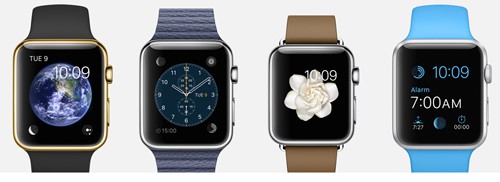
Across the developed world, healthcare systems face tremendous challenges driven by rising costs, increasing demand and big improvements in addressing complex conditions. Most healthcare systems are on an economically unsustainable path as healthcare consumes an ever increasing portion of the GDP, but improvements in technology offer the most likely solution to meeting this rising demand at a low cost.
There has been a lot of recent activity in the wearable technology space in healthcare, but most current applications focus on wellness and health tracking. Industry reports estimate the market will grow to over $5bn by 2018. In this time, we expect there will be an increase in wearable technology that qualifies as a medical device which will be user-friendly and cheap, and enables providers to offer more tailored care to patients.
Wearables promise
Wearable technology enables constant monitoring and data collection, thus allowing providers to look at data over time and have a deeper understanding of patient behaviour. From the constant stream of data captured, automated tools can quickly highlight anomalies, allowing providers to initiate early interventions – improving overall patient health and reducing costs. Providers can also identify patients that show signs of improvement, avoiding the need for unnecessary office visits.
Whereas a diagnosis is mostly based on a patient’s account of events and symptoms experienced, wearable technology offers an additional source of information to improve providers’ ability to diagnose their patients. This is particularly useful when the patients may not be able to provide information themselves, eg children, the elderly or those battling mental health issues.
Moving to regulated devices
To realise its full potential, wearable technology in healthcare has to cross the boundary from consumer electronics devices to regulated medical devices. However, the regulatory framework that exists for the approval of medical devices has proved to be challenging for many start-ups to navigate. As a result, they have chosen to provide wellness tracking devices that can be marketed as consumer electronics, rather than as medical devices under the jurisdiction of the US FDA.
Fortunately, this trend is changing. The FDA has recently announced smart regulation with more oversight directed to technology that represents a high risk to patients, scaling back its traditional approach.
Another promising development is the advent of large players into the market who are promising to provide somewhat open platforms for wearable technology. Samsung, for example, introduced its SAMI health platform in late May 2014 to enable interoperability between wearable devices. More recently, Apple’s HealthKit product announcement is an effort to position Apple as a platform which enables wearable health applications. Such open platforms for wearable health technology have far-reaching consequences for the industry’s future direction.

The Apple Watch is one of several new wearable devices that can help track people’s health
They could provide some structure to the market and move technology vendors from selling specific point solutions, to easily integrated solutions that rely on common architecture and platforms. Common platforms will also encourage further innovation by reducing market uncertainty for new entrants, and lowering the cost of regulatory compliance as only individual sensors will need to be FDA certified, rather than the entire solution.
These current developments are similar to the beginning of the PC in the 1980s. Before the PC, corporations had to purchase multiple point solutions, such as dedicated word processors, to manage their business. The PC provided a standard platform upon which other vendors created software solutions such as word processing applications and spreadsheets. This standardisation fostered great innovation as new application vendors entered the market and today we have a plethora of PC-based applications.
Wearable technology offers much promise to improve the delivery of healthcare, especially with the advent of regulated, wearable medical devices. We are on the cusp of rapid innovation, being brought about by large players that are offering standard platforms for wearable technology. This will reduce the cost of regulatory compliance and propel the industry to the more stable ground of wearables as regulated medical devices instead of merely consumer electronics devices. It is high time that regulators, developers and healthcare providers embrace the potential of these new technologies to improve the delivery of care to patients.





